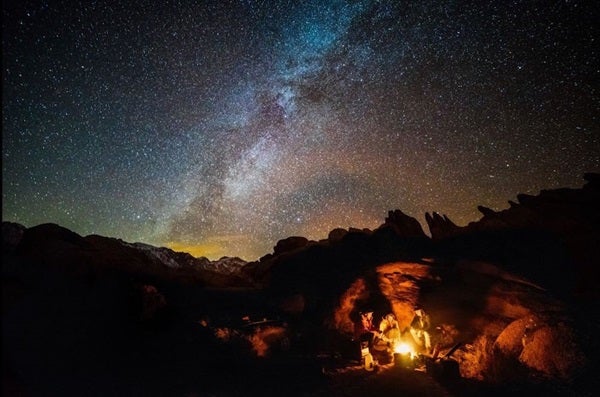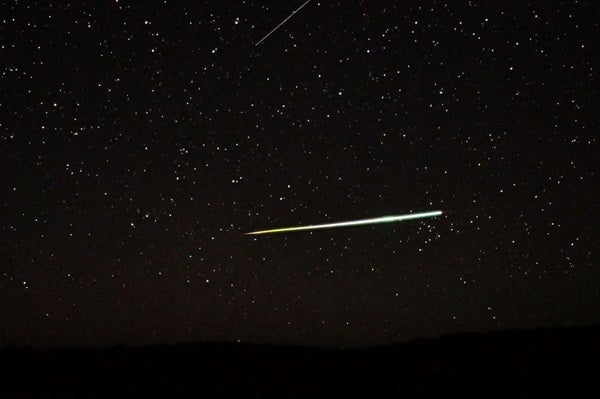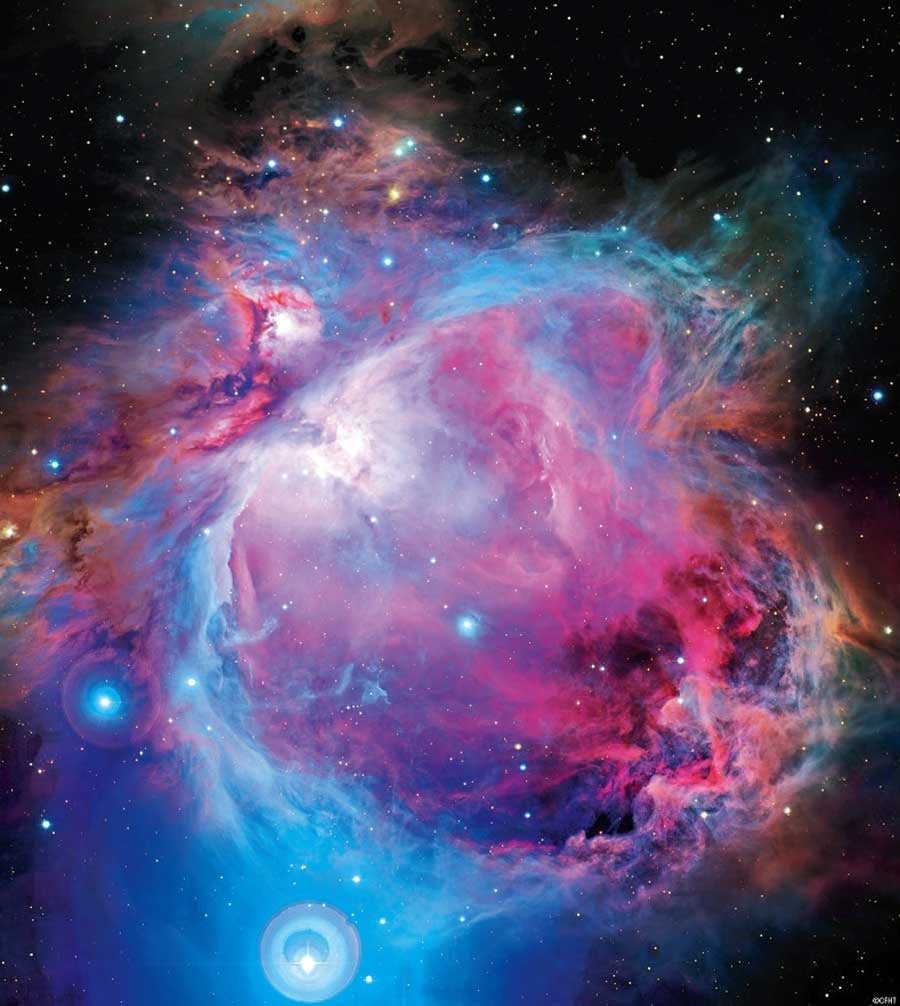You can use the Big Dipper as a guide to two of the spring sky’s brightest stars. If you follow the curve of the Dipper’s handle toward the eastern horizon, you’ll easily spot Arcturus. This magnitude 0.0 star, which belongs to Boötes the Herdsman, lies some 30° from the end of the Big Dipper’s handle. It is the fourth-brightest star in the whole sky and the second-brightest visible from mid-northern latitudes. And if you continue the curve another 30° past Arcturus, you’ll arrive at magnitude 1.0 Spica, the luminary of Virgo the Maiden. An easy way to remember the two is with the phrase: “Follow the arc to Arcturus, then drive a spike to Spica.”
The Moon reaches perigee, the closest point in its orbit around Earth, at 10:41 a.m. EDT. It then lies 229,108 miles (368,714 kilometers) away from us.
Saturday, April 21
One of the spring sky’s finest deep-sky objects, the Beehive star cluster (M44) in the constellation Cancer the Crab, lies high in the southwest after darkness falls. With naked eyes under a dark sky, you should be able to spot this star group as a faint cloud. But the Beehive explodes into dozens of stars through binoculars or a small telescope at low power. Tomorrow night’s First Quarter Moon slides 2° south of M44, but the extra light will render the cluster less impressive.
Sunday, April 22
The annual Lyrid meteor shower reaches its peak before dawn under good viewing conditions. The nearly First Quarter Moon sets before 2 a.m. local daylight time, leaving nearly three hours of dark skies before morning twilight commences. The shower’s radiant — the point in the constellation Lyra the Harp from which the meteors appear to emanate — climbs nearly overhead just before twilight starts to break. Under a clear dark sky, observers can expect to see 15 to 20 meteors per hour.
You can find the First Quarter Moon high in the southwest as darkness falls, then watch as it sinks toward the western horizon, where it sets shortly after 2 a.m. local daylight time. Our satellite officially reaches its First Quarter phase at 5:46 p.m. EDT. The half-lit Moon spends the night among the background stars of central Cancer the Crab.
Brilliant Venus appears low in the west after sunset all week. Look for the blazing point of light starting a half-hour after sundown, when it stands about 15° above the horizon. The planet shines at magnitude –3.9 and is by far the brightest object in the night sky after the Moon. As the sky darkens, the Pleiades star cluster (M45) gradually emerges 4° north (upper right) of Venus. Over the next several days, the planet will slide between the Pleiades and Hyades clusters. If you point a telescope at Venus, you’ll see a disk that spans 11″ and appears 90 percent lit.
Tuesday, April 24
Mars rises shortly before 2 a.m. local daylight time and climbs nearly 25° high in the south-southeast by the time twilight commences. The magnitude –0.2 Red Planet stands out against the backdrop of northern Sagittarius. When viewed through a telescope this morning, Mars shows a 10″-diameter disk and a few subtle surface details.
The waxing gibbous Moon lies near 1st-magnitude Regulus in Leo tonight. From North America, our satellite appears a few degrees to the left of the bright star.
Wednesday, April 25
Jupiter stands out among the background stars of central Libra from the time it rises around 9 p.m. local daylight time until morning twilight is well underway. The giant planet is near its best for the year right now, reaching opposition in two weeks (on May 8). Jupiter shines at magnitude –2.5, which makes it the brightest point of light in the evening sky once Venus sets around 10 p.m. The best time to view the planet through a telescope is when it climbs highest in the south, a position it reaches around 2 a.m. Jupiter’s spectacular disk spans 44″, and its dynamic atmosphere shows at least two parallel dark belts.
Thursday, April 26
Saturn rises before 1 a.m. local daylight time and climbs some 25° high in the south as morning twilight starts to paint the sky. The ringed planet shines at magnitude 0.4 against the backdrop of northern Sagittarius the Archer, some 12° west of Mars. When viewed through a telescope, Saturn shows a 17″-diameter disk surrounded by a stunning ring system that spans 39″ and tilts 25° to our line of sight.
It’s about time to grab your final evening views of Orion the Hunter. This bright constellation now hangs low in the west as darkness falls and starts to set around 9:30 p.m. local daylight time. The three 2nd-magnitude stars that form the Hunter’s Belt now appear parallel to the horizon. A line through these stars and extended to the left points directly to the sky’s brightest star, Sirius.
Saturday, April 28
Dwarf planet 1 Ceres is the largest object in the asteroid belt, which lies between the orbits of Mars and Jupiter. It currently shines at magnitude 8.4 and is an easy object to spot through binoculars or a telescope. Ceres resides in the northern part of the constellation Cancer the Crab, which appears high in the west-southwest after twilight fades to darkness. This evening, Ceres lies 0.7° north of 67 and 70 Cancri, a pair of stars that shine between 6th and 7th magnitude.
Sunday, April 29
Full Moon occurs at 8:58 p.m. EDT, but our satellite will look completely illuminated all night. You can find it rising in the east as the Sun sets and peaking in the south around 1 a.m. local daylight time. The Moon lies among the background stars of Libra, less than 10° from brilliant Jupiter.
Mercury reaches greatest elongation today, when it lies 27° west of the Sun and appears some 4° above the eastern horizon 30 minutes before sunrise. Unfortunately, this is one of the planet’s worst apparitions of the year for Northern Hemisphere observers. Mercury shines at magnitude 0.4 and appears as an inconspicuous dot even through binoculars.
Are you ready to take your stargazing to the next level? Download our FREE Guide to Viewing the Night Sky through Binoculars!












